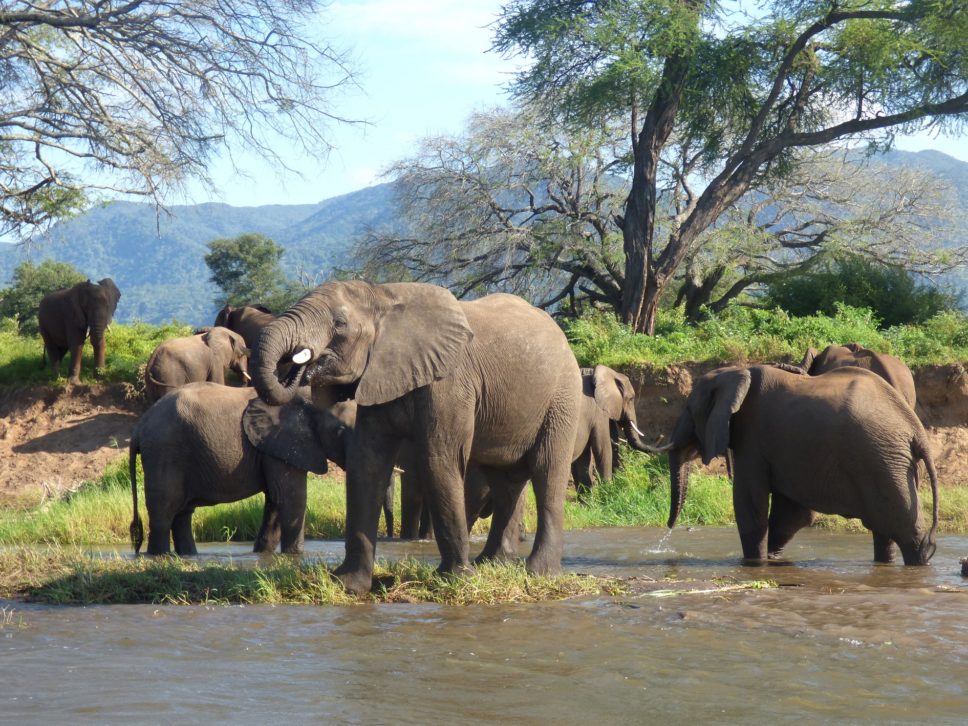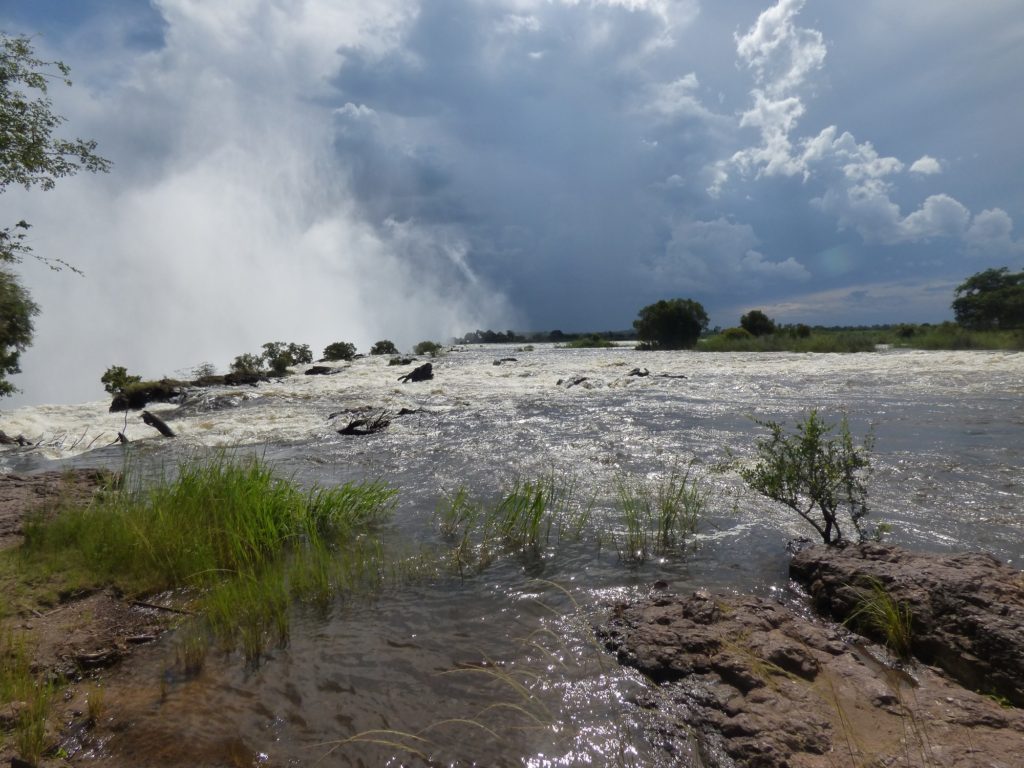Gazing out over a seemingly endless expanse of reeds, rushes and papyrus of the Kafue Flats - a huge floodplain in the heart of Zambia - our Zambian colleague interrupts the buzz of dragonflies and the whisper of grass blades rubbing in the breeze for a crash course on crocodile evasion.
“This place is absolutely infested,” begins Rowen Jani, an officer for the Zambian Water Resources Management Authority (WARMA). “If a crocodile comes for you, hold your breath and swim beneath the water,” he adds.
I exchange a nervous glance with ETH Zurich doctoral student, Elisa Calamita, who, despite several days under the tropical sun, suddenly looks pale. Perhaps sensing our anxiety, Mr. Jani adds helpfully, “Try not to splash too much.”
Water and wildlife on the Zambezi river
by Scott Winton
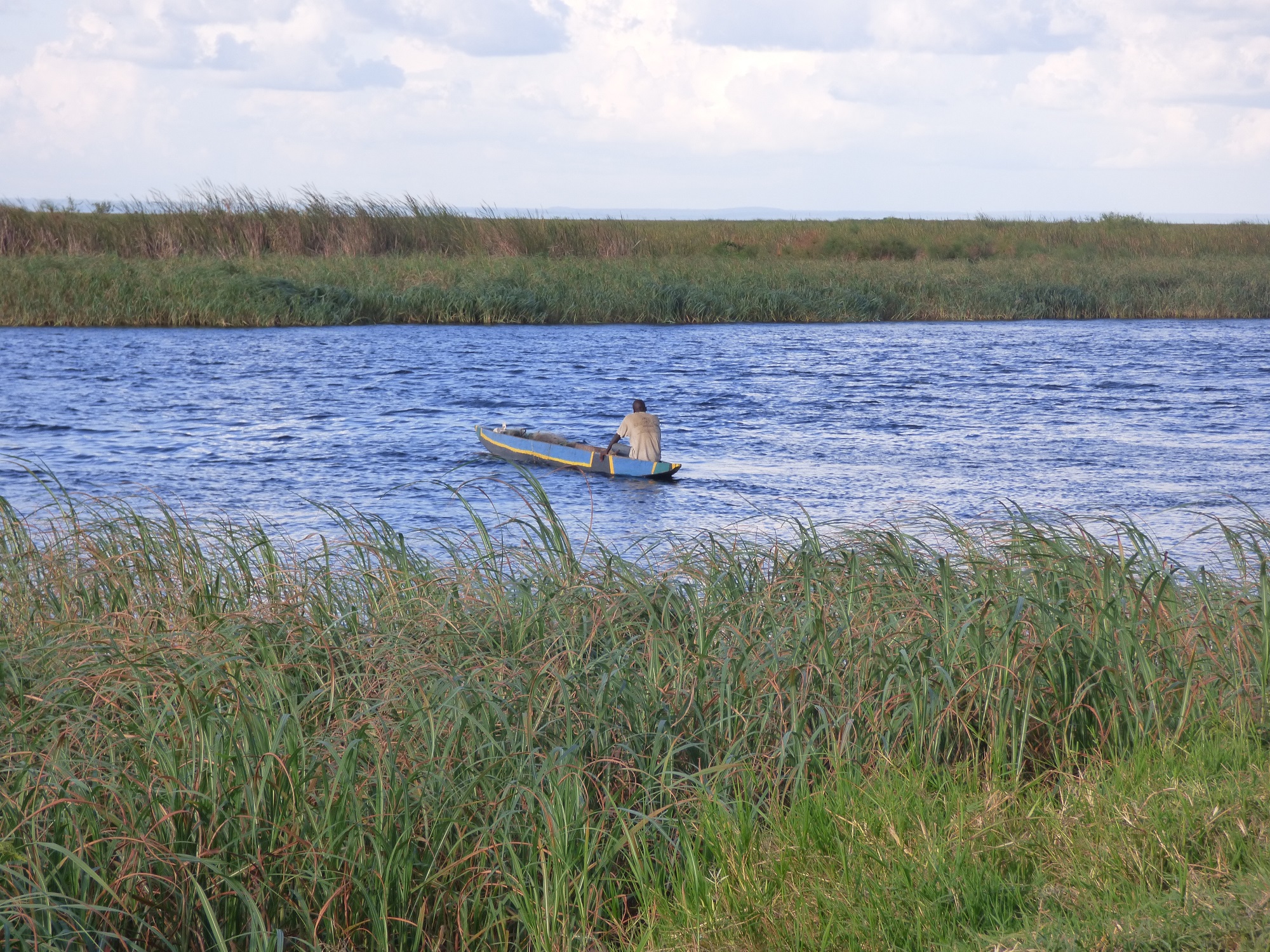
A Zambian plies the Kafue River in the Kafue Flats with his nets in search of fish. (photo credit: Scott Winton/ETH Zurich)
While investigating the water quality of the Zambezi River in the African country of Zambia, a team of aquatic chemists from ETH Zurich encounters elephants, hippos and learns how to survive a crocodile attack.
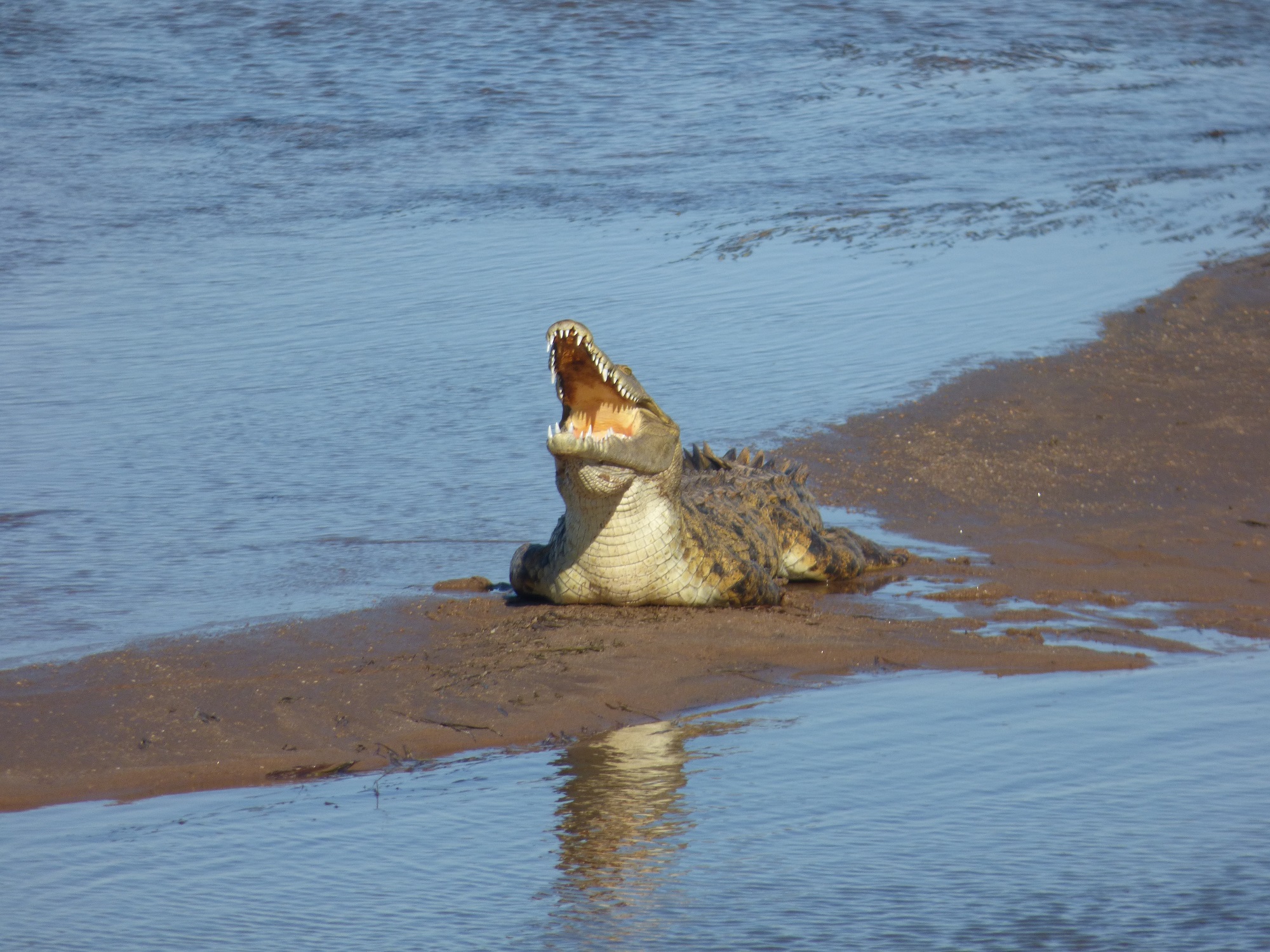
A crocodile shows off its teeth while lounging on the Zambezi River at the border between Zambia and Zimbabwe. (photo credit: Scott Winton/ETH Zurich)
Elisa and I are new to Africa, but our colleague, Cristian Teodoru (“Teo”) has been up and down the Zambezi. He has traveled from its source near the frontiers of Angola and the Democratic Republic of Congo, all the way to its delta at the India Ocean in Mozambique. Not five minutes later, Teo is dexterously maneuvering his 2-meter-tall frame laden with analytical equipment into a narrow dugout canoe and pushing off into the channel with a local fisherman.
Unlike most “Bazungu” (as Europeans are referred to locally), we are not here for a safari, but rather to investigate the water quality of the Zambezi River system, an iconic catchment that covers parts of 9 countries and faces an uncertain future. Zambia is experiencing one of the most rapid rates of population growth in the world (16% per year). Our research is motivated by a desire to understand how an accelerating demand for food and energy might affect the integrity of the region’s water resources.
In contrast to a predicted ecologically gloomy future, the Zambia we are experiencing in 2018 remains largely wild and sparsely populated. As we explore its rivers, we find ourselves sharing working space with extraordinary wildlife - crocodiles are ever-present, as are some representatives of Africa’s famous mammals including elephants and hippos.
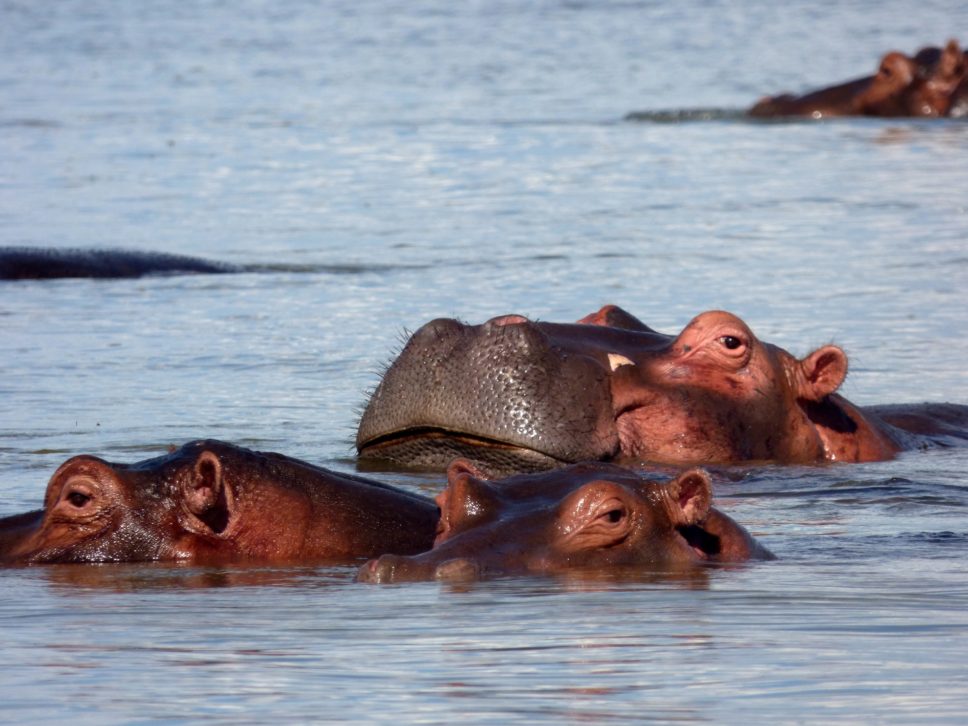
These hippos near Lower Zambezi National Park might appear docile, but they are Africa’s most deadly mammal species. Despite their herbivorous diet, they are often aggressive and territorial. Locals told us stories of a recent hippo attack that claimed the lives of five fishermen near Kafue Town. (photo credit: Scott Winton/ETH Zurich)

These hippos near Lower Zambezi National Park might appear docile, but they are Africa’s most deadly mammal species. Despite their herbivorous diet, they are often aggressive and territorial. Locals told us stories of a recent hippo attack that claimed the lives of five fishermen near Kafue Town. (photo credit: Scott Winton/ETH Zurich)
Broadly speaking, the water quality of the Zambezi basin appears to be excellent. The Zambezi is crystal clear and, in many places, locals drink it without treatment of any kind. Our analyses confirm that its concentrations of suspended particles or nutrients are very low (in abundance, these components are telltale signs of impaired water quality).
When we visit smaller tributaries closer to population centers; however, there are some hints of trouble. New, intensively managed agricultural tracts may be polluting some streams with massive loads of leeched fertilizer, just as this practice has impaired waterways in industrialized regions of Asia, Europe and North America.
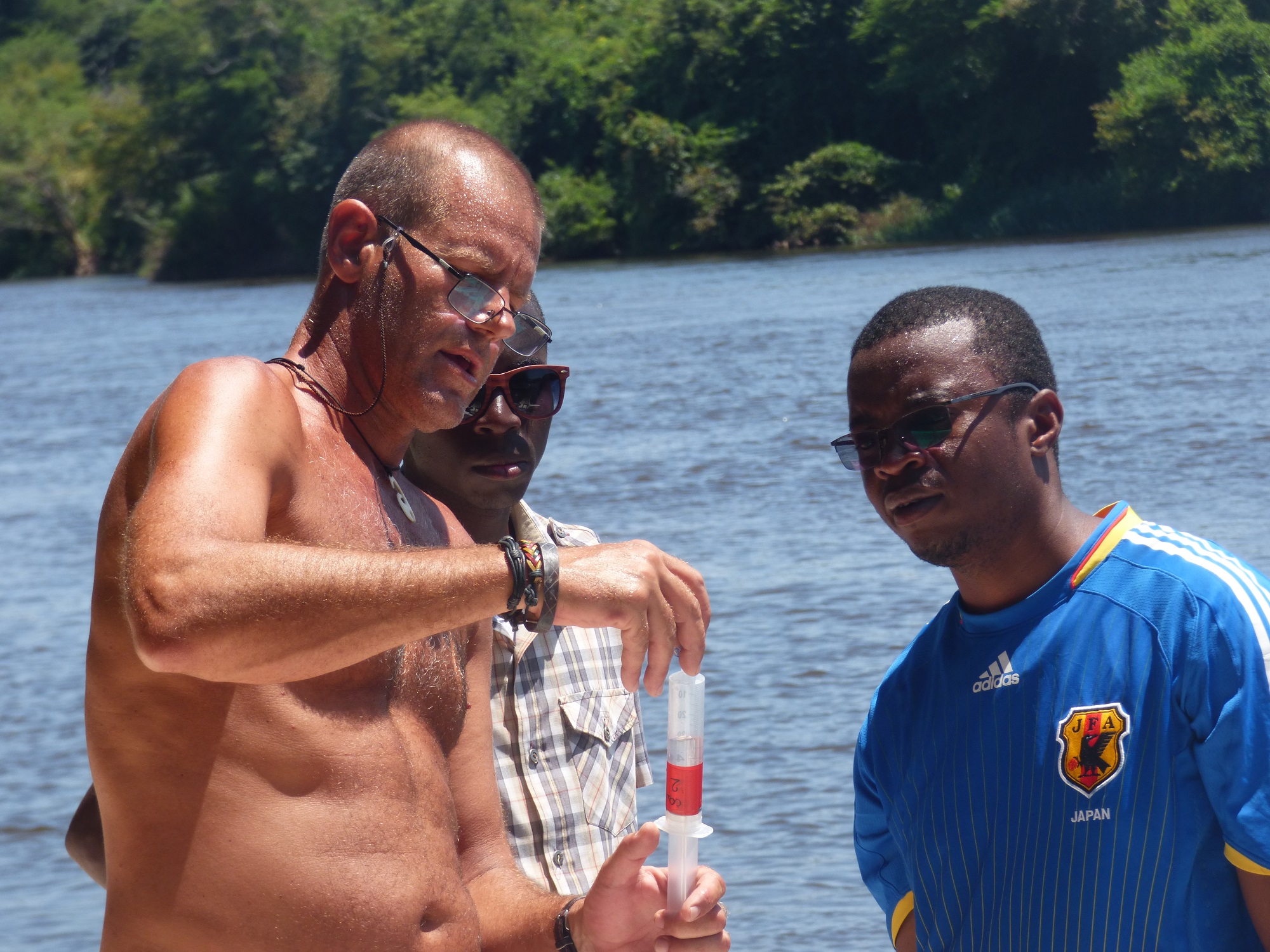
Cristian Teodoru (left) demonstrates a water sampling method at the Kafue River to two students from the University of Zambia. (photo credit: Scott Winton/ETH Zurich)
There is troubling news as Teo returns from the Kafue in the dugout canoe. While he has not had any crocodile encounters, his hand-held probe has detected exceptionally low concentrations of dissolved oxygen. In fact, the concentrations read well below the threshold of what fish typically require for breathing.
What does this mean for the thousands of Zambians who rely on the fish of this floodplain as a source of protein and income? What might be sapping oxygen from the river at this time? These and other scientific questions, rather than threat of crocodiles and hippos, haunt us as we travel back to Zurich and plot our future campaigns.
Read about the experiences on the Zambezi river of Scott's research colleague Elisa Calamita

About the author
Dr. R. Scott Winton is a postdoctoral lecturer and researcher in the Department of Environmental Sciences at ETH Zurich. While completing a PhD in Environmental Science at Duke University in North Carolina, USA, he published several research articles on bird ecology and greenhouse gas cycling in wetlands. He is currently studying the effects of dams on the water quality of tropical river systems in the Aquatic Chemistry group in the Institute for Biogeochemistry and Pollutant Dynamics.
Website: rscottwinton.wordpress.com

